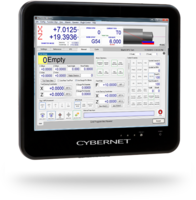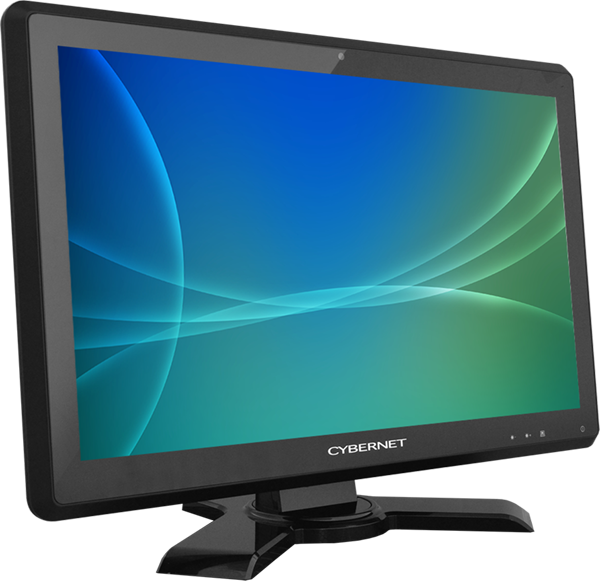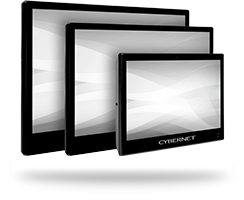Ever wondered what is an All-in-One PC? The following breaks it down for you: a definition, the different types, and the benefits. A helpful checklist is also provided if you're in the market for these powerful, compact, and versatile computers.
An All-In-One PC: A Basic Breakdown
All-in-One PCs combine the separate tower-and-monitor layout of traditional desktop computers into a single, compact unit. While users control both kinds of PCs through a keyboard and mouse, many All-in-Ones have ditched them thanks to touchscreen-capable monitors.
All-in-Ones are also called AIO (AiO), AIO PC, panel PC, and single-unit PC.
It's In The Power (Source): Types of AIO Computers
AIOs are tremendously versatile and found across many industries. One reason is how they're powered. While many use standard power outlets, those using Power over Ethernet and rechargeable batteries draw power differently. This means they aren't limited to the nearest outlet, allowing users to expand their ability to perform tasks.
Power over Ethernet Panel PC
Most computers come with a power cord and a data line. Power over Ethernet (PoE) technology combines the two into one Ethernet cable. Office telephones and security cameras are examples of using PoE.
And what advantage is this for an All-in-One PC? Users can now ditch the power cord and brick as they no longer have to worry about using outlets. A PoE industrial PC or similarly equipped AIO, for example, can be placed in the middle of a warehouse or similar vital but out-of-the-way locations.
There's another advantage. PoE also uses less power, which reduces energy bills. Ethernet cabling is also cheaper and easier to install than new outlets, further lowering expenses.
Battery Powered All-In-One Computers
As the heading states, these panel PCs are powered by batteries as well as a standard power outlet.
These are not ordinary batteries. They are rechargeable, with users exchanging ("swapping") spent batteries with freshly charged ones from the charging station. More importantly, they are hot-swappable, allowing users to exchange without turning off the machine.
This All-In-One PC stands out because users can run them continuously while moving them about. This is vital for certain workplaces like hospitals, which operate 24/7. Medical staff can mount their all-in-one medical PC on a workstation on wheels (WOW), for example, and then move about to different rooms to see patients. The lightweight AIO makes it easy, especially with non-powered WOWs.
Why You Want an AIO PC: Benefits
So you now know the different types. So what about All-in-One PC makes them so appealing? Despite their small builds, AIOs have much of traditional desktop computers' power, abilities, and features. This combination provides many benefits.
- Compact - AIOs are a great option for any setting where space is premium. Examples range from students' desks to hospital cleanrooms.
- Minimal clutter - AIOs have few connectors, which are usually power cords and cables for keyboards and mice. And the last two may be optional, with many of today's all-in-ones controlled by an intuitive touchscreen.
- Ease of transport - The average AIO weighs between 12 to 30 pounds. That makes them easy to move and transport. Users moving traditional desktop PCs must deal with the PC tower, its monitor, and their keyboards, mouse, and cables.
- Ease of Use - AIOs take the guesswork out of purchasing a PC. Many accessories like speakers, which must be attached to traditional computers, are built into panel PCs. Just plug the AIO in the nearby outlet and start working.
- Aesthetically pleasing - Many computer manufacturers design their AIOs to be visually appealing. They look sleek and stylish compared to the boxy tower of most traditional desktop PCs.
Choosing the Right All-In-One PC
If you're looking at AIO for personal or workplace use, here's a guide to get you started.
- Space considerations - Panel PCs come in a variety of sizes. Business computers, which are used from offices to schools to retail, range from 19-inch screens to 24-inch. Consider where you'll be placing them to find the right fit.
- Costs - Like laptops, AIOs use smaller parts than traditional desktop PCs. That can make them more expensive. Review your budget and price accordingly.
- Hardware Specs - How will you be using your PC? Heavy number-crunching needs AIOs with a powerful CPU, lots of memory (RAM), and storage space (hard disk) versus one for word processing and surfing the Internet.
- Expandability - Because panel PCs jam so many components into their chassis, they're more difficult to upgrade or repair. Ask yourself how important this is to you or your company. Note that certain panel PCs have computer ports that allow them to connect to unsupported ("legacy") systems.
- Industry-specific - Finally, consider the conditions where you’ll be using the all-in-one. For example, if they’re for the workplace, are there any special requirements? A PC used in an operating room needs to be medical grade so it won't interfere with the medical devices around it. Ensure your panel PC has the features needed for its new home.
Meet Your All-in-One PC Needs With Cybernet
Many industries today need powerful computers but don't have the space for the traditional tower-and-monitor desktop PC combo. All-in-One PCs meet that need with their compact design, bringing benefits from ease of transport to quick setup.
Discover Cybernet's lineup of panel computers! Contact our team, who will happily answer your questions of what is an All-in-One PC, and what to look for when considering one. We have pre-built models across major industries (healthcare, industrial, and enterprise) from which to choose form.
Can't quite find what you're looking for? Let us customize one for you. We're an original equipment and design manufacturer. This gives us full control of our computers. We're confident we can build the all-in-one to meet your exact wants and needs


